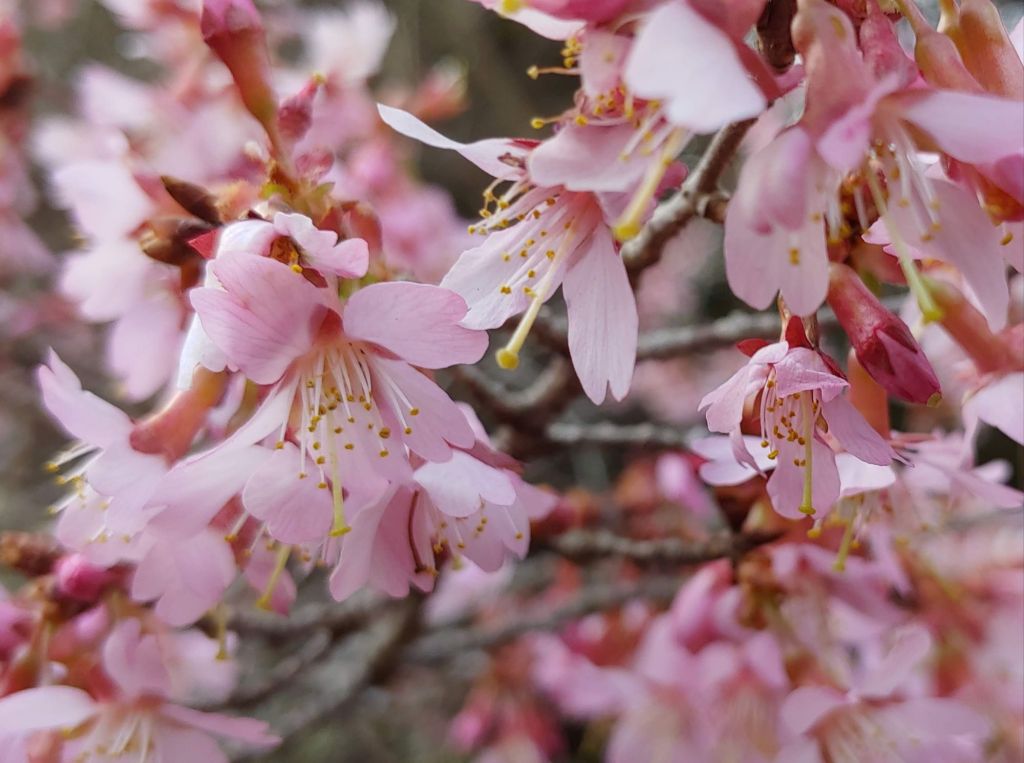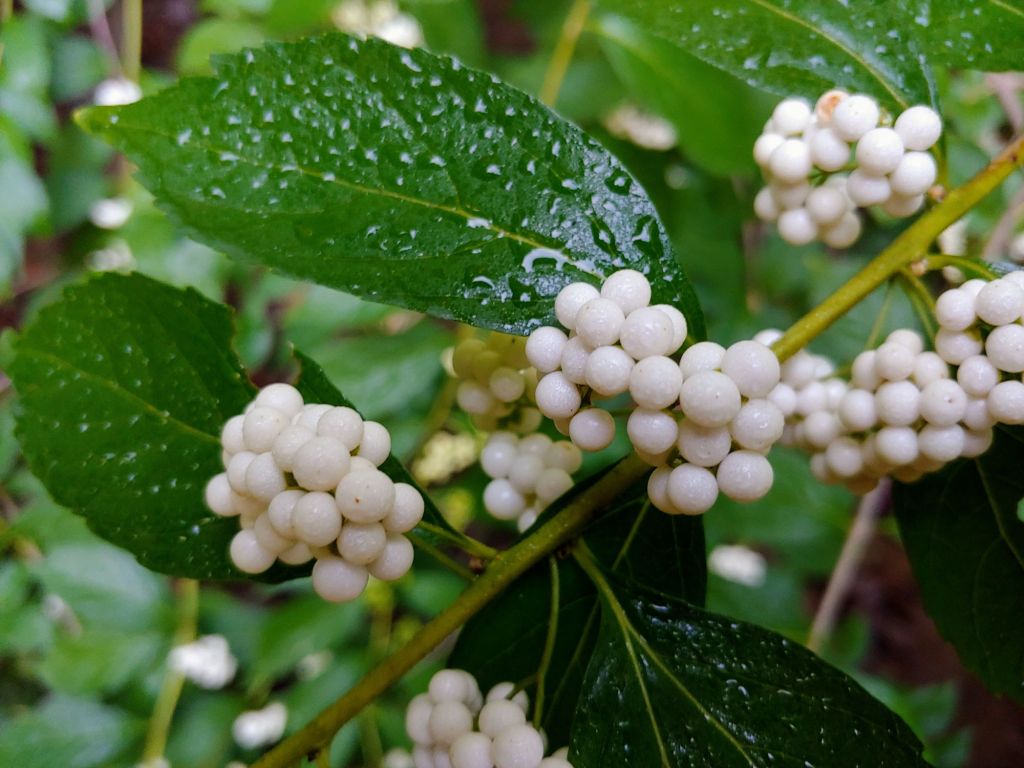A year ago, the ‘Okame’ cherry (Prunus ‘Okame’, below) bordering the koi pond flowered gloriously alongside the massive paperbush (Edgeworthia chrysantha), both in the last week of February. While paperbushes have flowered here as early as late January, this was the earliest bloom I recall for the cherry.

While the flowers of ‘Okame’ and the paperbush overlap annually to some degree, again this year, their peaks will coincide. The reflection in the pond from the two is splendid if you are able to push through the border of dense vegetation. The view from the patio will suffice for me since I’ve enjoyed the scene for a few decades.

‘Okame’ is perhaps the most practical of the flowering cherries, though it lags far behind ‘Yoshino’ and ‘Kwanzan’ in popularity. While the two more common cherries are wide spreading, making planting beneath a challenge, ‘Okame’ has an upright oval form that is attractive and allows for planting nearer the trunk. I prefer its earlier flowering, typically in the first weeks of March rather than three weeks later, though a year ago, the light pink flowers were injured by a spell of severe cold. Flowers of paperbushes were not damaged.

Later in the season, the lower branches of ‘Okame’ become a stepladder for a seedling of the white-berried beautyberry (Callicarpa dichotoma ‘Albifructus’, above) that climbs to double its unsupported height, and a native, yellow flowered passionflower vine (Passiflora lutea, below). The beautyberry was chopped in half a year ago, so it hardly showed through the cherry, and I have long regretted moving the vigorous passionflower from its previous perch to a new home sprawling through ‘Okame’ where its marvelous blooms can not be enjoyed close up.

I once considered adding the splendid mahogany barked, paperbark cherry (Prunus serrula), and today, I would much prefer it rather than the tall cherry with pendulous branching (Prunus subhirtella ‘Pendula’) that slowly declines in the shade from the neighbor’s oak. I must also mention that along this western border, a seedling native cherry has snuck in behind an evergreen magnolia and grown quite large. It should be removed, and perhaps some day I’ll get around to it.